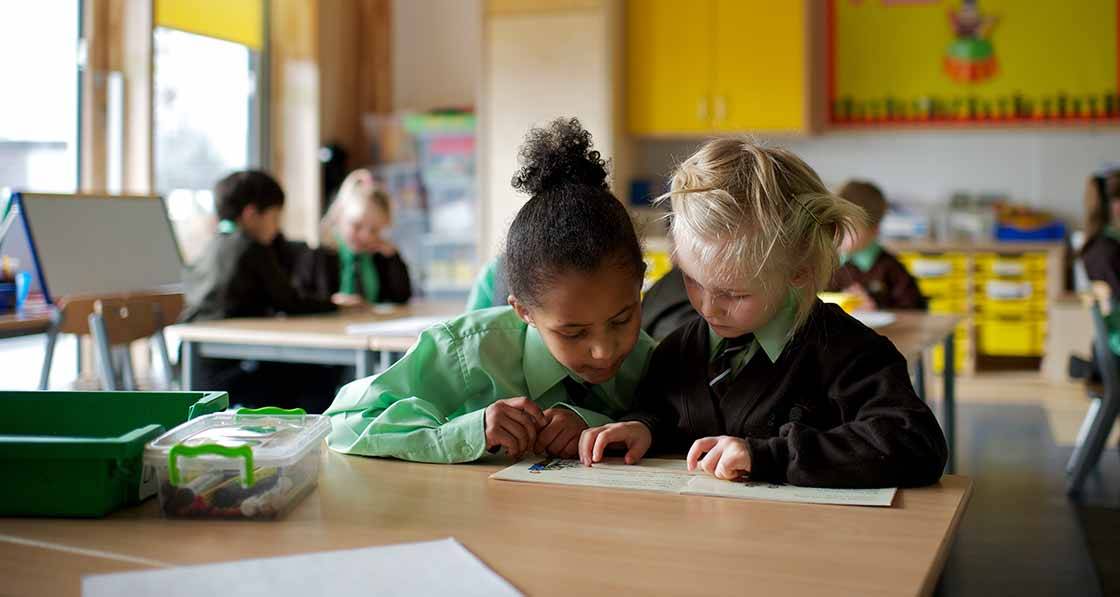
 Andrea Lacchia
Andrea Lacchia
- Feature
- Posted
Breathing room - why it's time to get serious about ventilation
Proper ventilation has been recognised as an important quality for school buildings at least since the Victorian era. But, in the current pandemic, have we lost sight of the role of ventilation?
This article was originally published in issue 36 of Passive House Plus magazine. Want immediate access to all back issues and exclusive extra content? Click here to subscribe for as little as €10, or click here to receive the next issue free of charge
Architects at leading sustainable design firm Architype have long been thinking about how to ensure good air quality in schools. Mark Lumley, associate director at Architype, oversaw the delivery of the first passive-certified schools in the UK in 2011. But the firm’s work and research into school building design started even before that, with the delivery of two primary schools — St Luke’s and The Willows — in Wolverhampton in 2008 and 2009.
“We worked to deliver them as sustainably as we could,” Lumley said. This involved careful consideration of building fabric, and super insulation of the buildings through triple glazing and building orientation, as well as the use of cross ventilation to secure good air flow.
“We used non-toxic materials as much as possible,” said Lumley. This included natural paints and finishes, timber in the construction, and recycled newspapers in the insulation. These two schools served as an example of “strong ideological principles put into practice,” he added.
Evaluation of the schools, once they were occupied, identified certain elements of the building structure and performance that could be improved, such as the presence of cold bridges in the structure, as well as elevated CO2 levels inside.
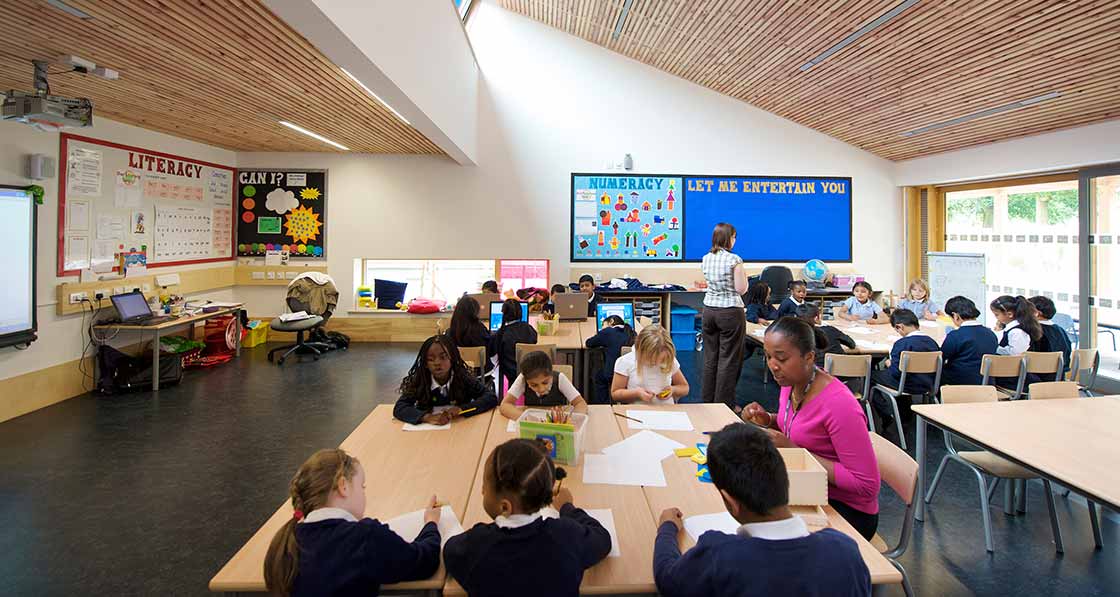
“There were various areas in which we felt we could improve our delivery, and that’s when the practice became aware of passive house and all it entails,” said Lumley. To ensure better air quality and better performance of the buildings, Architype adopted the passive house standard for its next two primary schools, Oak Meadow and Bushbury Hill, which were built for Wolverhampton City Council in 2011. This led to the commission of Wilkinson Primary in Wolverhampton, completed in 2014, also to the passive house standard.
A subsequent program of post-occupancy research, run in association with Coventry University, compared the performance of Architype’s non-passive schools with the first and second generation of its passive schools, as well as with a school built in the 1970s and not designed by Architype.
The research, conducted in four classrooms in each of the six schools over one year, included monitoring CO2 levels as a proxy for ventilation rates and air quality, measuring humidity and temperature levels, observing blind usage and window opening behaviour, as well as assessing teachers’ and children’s perceptions of their environment, such as satisfaction, through questionnaires.
One of the researchers involved in this program was Chryssa Thoua, an architect who is currently completing her PhD at University College London in collaboration with Architype on a different project.
The results were clear. Passive-standard schools performed better across all the measurements. “Temperatures were more stable in the more recent passive house schools, and ventilation rates were higher in the passive house schools,” said Thoua.
“The difference was really stunning when comparing the results with the conventional school from the 1970s,” she added. “There was a little bit of overheating in summer in the earlier passive house schools,” commented Lumley, “but nothing like the overheating you get in some of the non-passive house schools, so overall the fabric was doing what we wanted it to and the energy bills were incredibly low.”
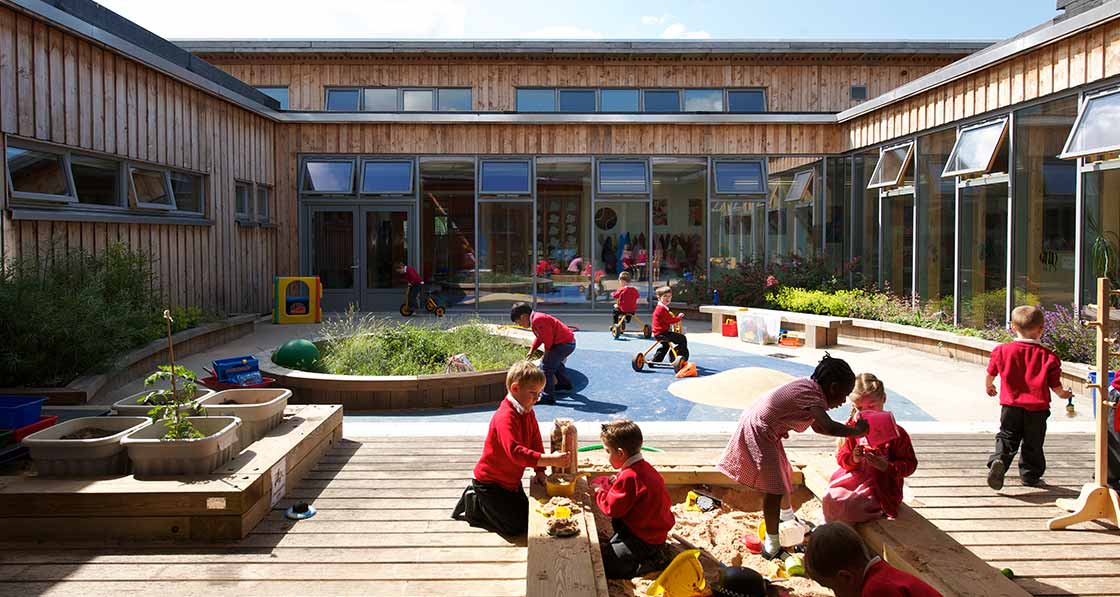
Since 2014, Architype has delivered further passive-certified primary schools, as well as the first passive house secondary school in the UK – Harris Academy Sutton, which is featured in this issue, the latest in a long list of Architype schools to be published in Passive House Plus.
The impact of architects’ decisions on the environment has been a constant consideration throughout Thoua’s career. “I think a lot of architects have the sense that, in order to build something, you have to destroy something else. So you have to tread very lightly,” she said.
“Indoor air quality and the indoor environment play a significant role on children’s health, development, academic performance, concentration and memory. Different studies have shown again and again how important it is to maintain good indoor air quality and a good environment in schools, and it is a matter of social justice as well,” she said, stressing that, as designers, “we have to make sure we get it right”.
Her current research aims to understand more about indoor air quality and thermal conditions in passive-standard primary schools in the UK, and to develop a framework for assessing indoor air quality in schools. While CO2 levels act as a good proxy for occupant-related air pollutants, Thoua told Passive House Plus that she wanted to provide a more comprehensive assessment of indoor air pollutants and air quality in schools.
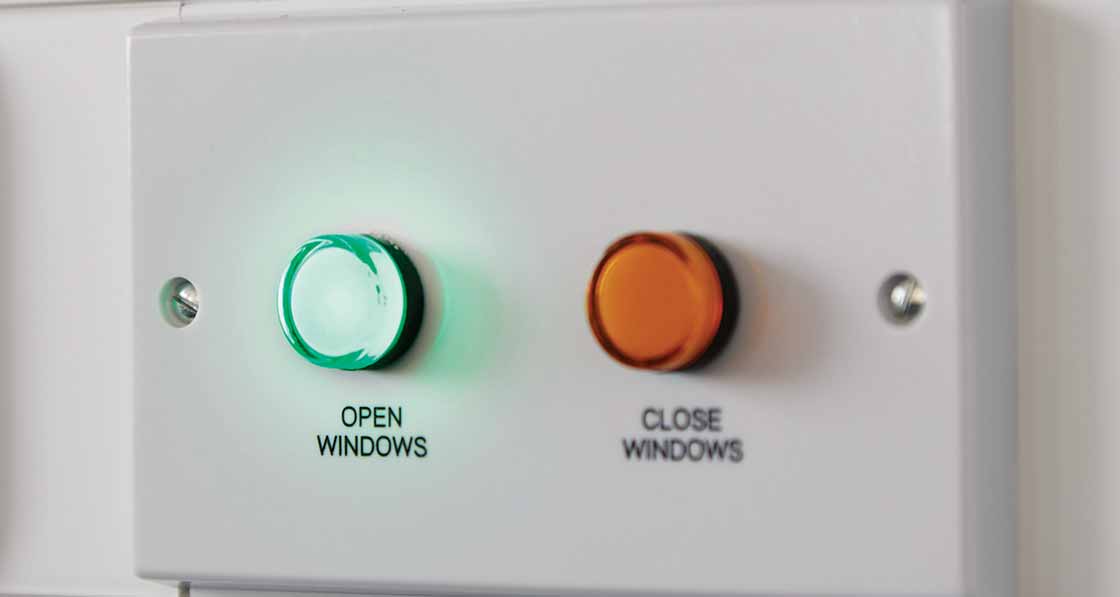
Using indoor and outdoor sensors in a sample of classrooms over one year, she measured parameters such as temperature, relative humidity, and pollutants such as CO2, nitrogen dioxide, particulate matter, total volatile organic compounds (which can be emitted by materials such as paints and adhesives) and carbon monoxide. These measurements were coupled with observations in the classrooms.
Given that this research is based on case studies in four schools, “we can’t generalise too much,” cautioned Thoua, but results to date indicate that, on average, ventilation rates (estimated from CO2 levels) in the passive-standard schools were higher than those reported in previous studies in primary schools in the UK, and there was no overheating in summer, taking into account outdoor mean temperatures.
“We also found that in winter, the average daily minimum temperature [in the passive schools] was above 19°C in all classrooms.” she said. This is in line with current guidance, though in reality temperatures in regular classrooms often drop below this in winter.
Thoua’s research is ongoing, as she continues to assess the correlations between the measurements and different building characteristics, in an effort to propose effective strategies for managing indoor air quality in schools.
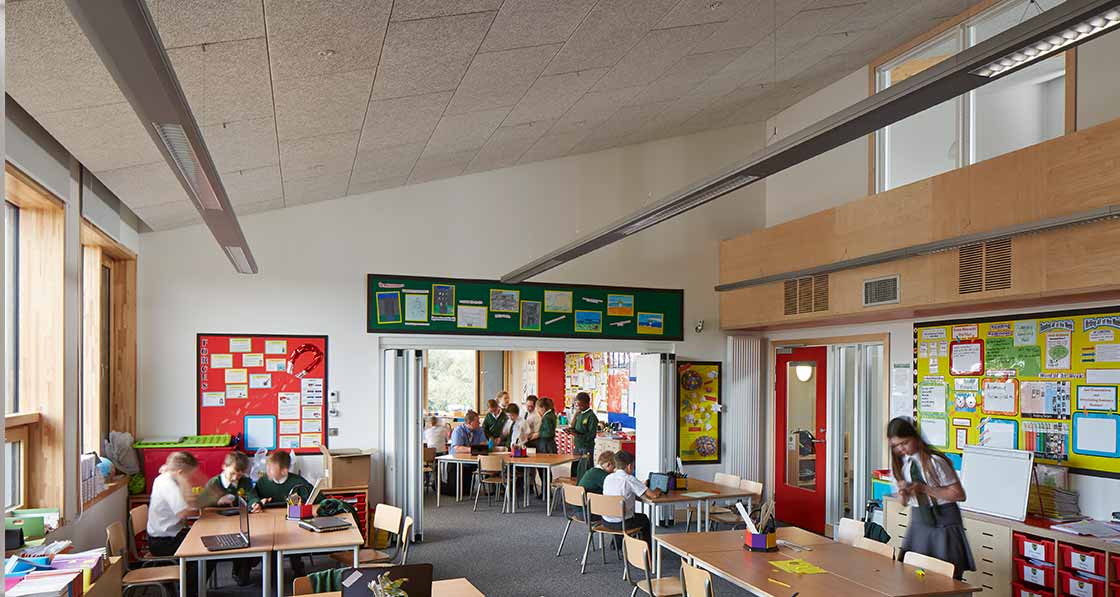
Being mindful of the air inside school buildings is critical in the context of Covid- 19, with ventilation playing a key role in mitigating the transmission of this disease, said Professor Jose L Jimenez, a fellow at the Cooperative Institute for Research in Environmental Sciences at the University of Colorado Boulder.
While we don’t yet have published studies on the impact of passive house design on Covid-19 transmission, the need for good ventilation is well-established in the scientific literature, and in policy advice relating to Covid-19.
Jimenez, who is studying the transmission of Covid-19, is one of the authors of a recent study which highlights how singing indoors, unmasked, can spread Covid-19. Since the start of the pandemic, several super spreading events involving SARS-CoV-2, the virus that causes Covid-19, have occurred during choir practices. Such events highlight the importance of following public health advice, including the use of face coverings, hand washing and social distancing. They also tell us something about how the disease can be transmitted.
Scientific research on Covid-19 is moving at a very fast pace, and, as a result, our understanding of this new disease is constantly evolving, with updated guidance and advice from national and international public health experts following suit. However, Jimenez told Passive House Plus, the evidence for airborne (through the air) transmission of Covid-19 is now “overwhelming, and it has been overwhelming for quite some time.”
“When people talk, aerosols are between 100 and 2,000 times more important than droplets. There are two situations in which the disease is transmitted: one is when you talk in close proximity to someone […], especially without masks indoors or outdoors. The second situation is when you share indoor air in a room with someone who’s infected for a long time, meaning at least 30 minutes, to an hour or several hours. That’s when we see these super spreading events,” he explained. If you imagine the virus as inside smoke, “smoke is very concentrated in front of the smoker, but it can fill a room with time,” he said Jimenez.
Jimenez is one of 36 scientists who wrote an open letter to the World Health Organisation in July, asking it to recognise the airborne spread of Covid-19, and to revise its recommendations. The letter is signed by 239 scientists and is published in the journal Clinical Infectious Diseases. It cautions against overcrowding and calls for ventilation measures to include “a clean supply of fresh, outdoor air” and to “minimise recirculating air”.
Another signatory is Professor John Wenger from University College Cork, who studies the chemistry of the atmosphere, including the chemical and physical properties of aerosols. “Aerosol or airborne transmission is really an important way that the virus is spread, and it’s been kind of ignored,” he told Passive House Plus.
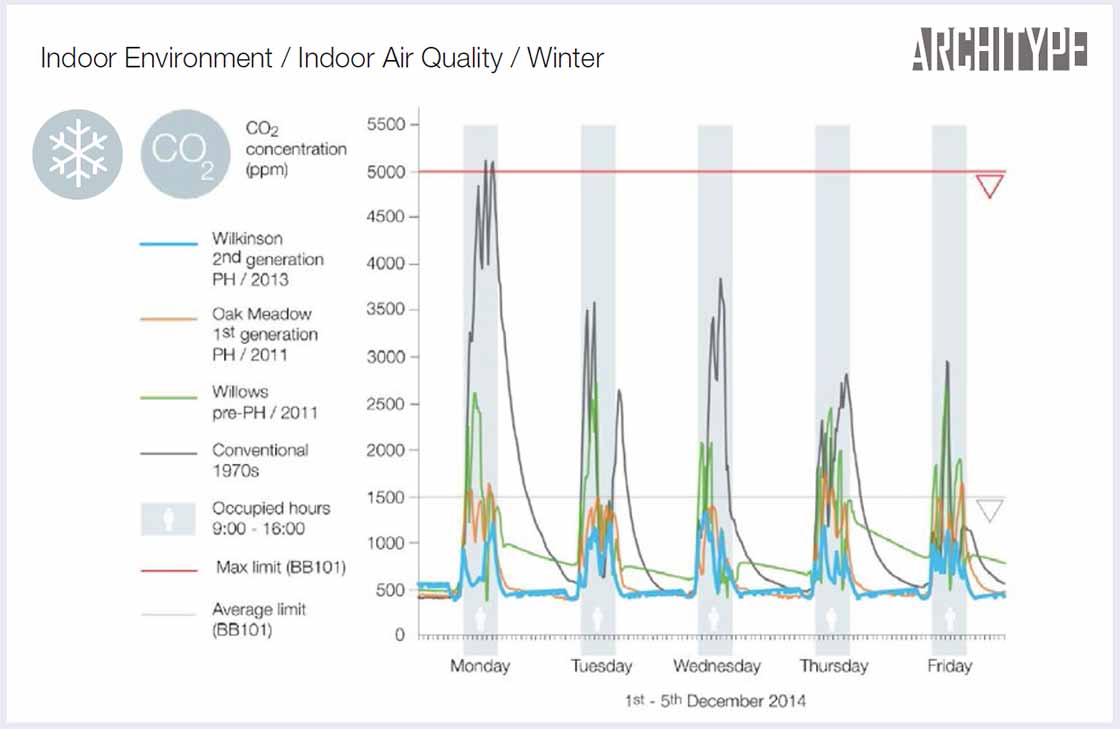
Monitored CO2 levels in several Architype-designed schools - including pre passiveMonitored CO2 levels in several Architype-designed schools - including pre passiveand two generations of passive house designs - along with a conventional 1970s school.
“Masks are one of the best defences we have against spreading and also receiving the virus,” said Wenger, “but the next thing we really need to think about is ventilation. The focus has been very much on being close and also cleaning surfaces, but we need to clean the air as well.” This has important implications for how we ventilate our classrooms.
Simply opening the windows five minutes every hour doesn’t work, said Jimenez. One way of mitigating the risk of transmission is to equip schools with CO2 monitors, to measure CO2 as a proxy for ventilation and for the amount of virus in the room, said Wenger.
CO2 monitors with a traffic light system, which are equipped with non-dispersive infrared (NDIR) sensors, are cost-effective and can help remind teachers to act by opening windows when levels get too high (usually above 800-1,000 ppm), said Wenger.
Jimenez agreed that CO2 sensors are essential but recommended keeping the CO2 level “below 700 ppm at all times”.
However, “a low level of CO2 doesn’t necessarily mean that your ventilation is good,” cautioned Dr Chris Iddon, chair of the CIBSE natural ventilation group. This is due to the time it takes for CO2 to build up in a space, which will vary according to room size and the number of occupants, he explained. Iddon also pointed out that there is still a lot we don’t know about Covid-19, including the dose of virus required to infect someone. In addition, the amount of aerosols that someone might release can vary by several orders of magnitude, he said.
CISBE’s current guidance on ventilation in the context of Covid-19 recommends “ventilating spaces as much as reasonably possible with outside air as one measure to reduce transmission risk.” It also states that, “CO2 concentrations regularly greater than 1500 ppm are indicative of poorly ventilated spaces.” This advice is consistent with that of the UK government’s environmental and modelling group, part of SAGE (Scientific Advisory Group for Emergencies), published in October.
As well as tackling the immediate crisis posed by the pandemic, installing good ventilation systems in schools would ensure “a healthier environment for everyone, better academic performance, and hopefully better energy efficiency as well,” said Wenger. The type of ventilation employed may depend on what is achievable in the short and longer term. In the short term, we may be forced to rely on opening of windows — preferably with CO2 sensors — as a means of mitigating airborne transmission risk, said Wenger, but in the future the design of appropriate ventilation systems in schools is essential in ensuring air quality.
“In the short term, it’s going to be very difficult, I would say, to roll out proper ventilation across all the schools. But in the medium term, it’s something we should really look at. Because there are going to be big benefits,” he said. “If we have proper ventilation in classrooms, there will be less spread of things like cold and flu so it will maintain a healthier environment for everybody. We’ll also have improved academic performance and hopefully better energy efficiency too.”
Chris Iddon said that natural ventilation can work if done correctly. “Natural ventilation openings don’t have to be fully open or fully closed,” he explained, suggesting a balance can be struck between comfort and ventilation. “There are several systems out there that will mix the air to temper it before delivering it.” While mechanical ventilation in passive house schools presents advantages, people also need to understand how to operate the system, he said.
Air filtration is also “very important,” said Wenger, cautioning that any recirculated air needs to be filtered and filters need to be changed regularly. Jimenez and Wenger agreed on the effectiveness of portable HEPA (High Efficiency Particulate Air) filters, which can be plugged into the wall, in mitigating the transmission.
Temperature and humidity represent another concern when it comes to viral transmission. As Wenger pointed out, “at lower temperatures, the virus survives for longer.
There is a sweet spot between about 40 per cent and 60 per cent relative humidity in which the virus has a reduced lifetime.” Clearly, we need to take indoor air quality in schools very seriously for the sake of the health of students and teachers, and this is ever so true in the context of the current pandemic. As Jimenez urges, “we need to remove the virus from shared air in places where we have to continue sharing air. Otherwise, the economic damage and the human toll are going to be enormous.”
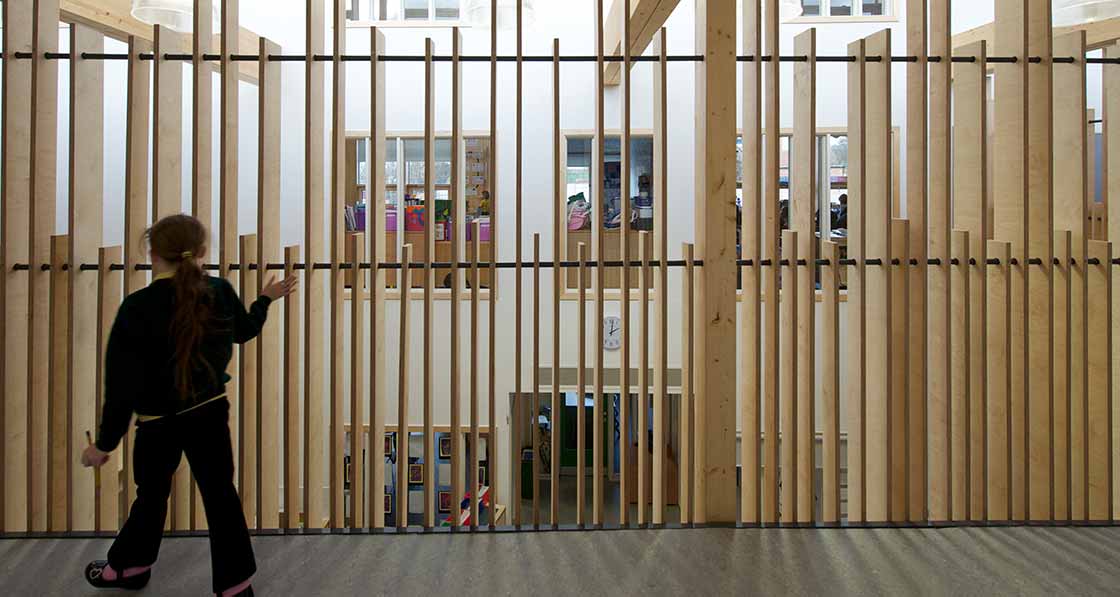
Editor’s view
Opening windows only a short-term solution While in the immediate short term we may be forced to rely on opening of windows — preferably with CO2 sensors — as a means of mitigating airborne Covid transmission risk, this approach is very limited for a number of reasons.
Classrooms may be single aspect, and thus with little or no scope for cross ventilation. They may also have as little as one opening window, perhaps just a high level window that can be difficult to open, meaning very limited ventilation, in particular on still days.
And noise disruption may be a real problem when windows are open, particularly for street-facing classrooms in urban schools, or indeed all schools where break times are staggered, in the case of classrooms facing the school yard).
Open windows may let rain in too, and the classrooms may become too cold when windows are open. And they may require close management by the teacher, to open windows if CO2 levels get too high, and to empty the classroom if CO2 levels still aren’t falling low enough.
Even if the teacher is operating the windows perfectly it may not cause CO2 levels to fall sufficiently, depending on weather, the number and position of window openings, and the shape of the room.
For all of these reasons, and the fact that Covid isn’t the only virus or pollutant we’ll be facing, I think we need to plan to implement strategies which deliver consistently good indoor air quality levels as seamlessly as possible.
That means not freezing teachers and pupils, minimising noise disruption, and reducing the burden on teachers to manage ventilation levels via opening windows, in so far as can be reasonably expected.
And I think that ultimately leads designers in the direction of passive house and Enerphit (the passive house retrofit standard), because of the combination of heat recovery ventilation — which introduces fresh and pre-warmed air — and a well-insulated, airtight fabric. These standards deliver thermal comfort while constantly supplying fresh air.



